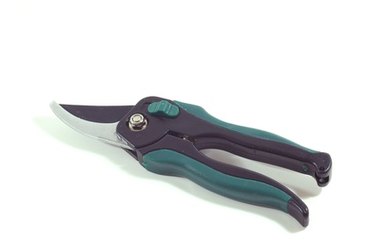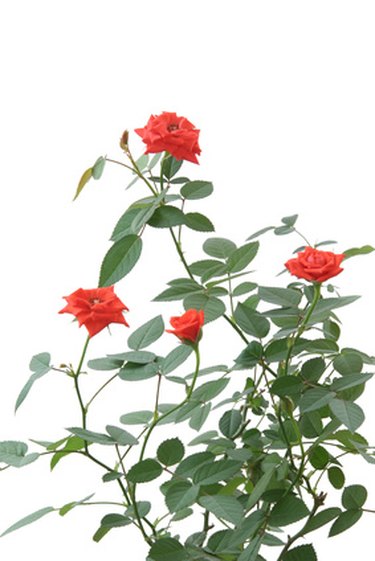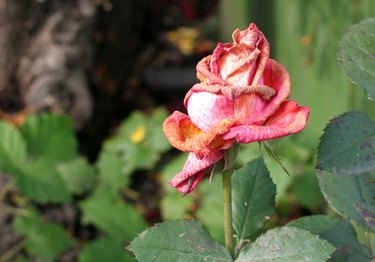
Roses benefit from proper care and pruning. Learn to recognize the signs for pruning roses to produce a healthy plant that will provide more blooms. Pruning invigorates growth, helps shape the plant for aesthetic reasons and keeps it safe from disease and weather damage. Some types of roses require different pruning methods. Generally prune in cool months, such as late fall or early winter, to protect your plant from cold winds and ice. Less damage occurs to shorter, trimmed canes. Trim canes back to about one third of their length. In warmer climates, prune in early spring, after buds begin to swell.
Dead and Diseased Growth
Video of the Day

Completely remove dead and diseased canes. Dead canes will be brown, dry and brittle. Diseased canes may look similar or with wilted, dry or spotted leaves. Insects and webs may also be a sign of disease. Mildew can be another culprit.
Video of the Day
Lack of Air Flow

Look for tangled centers and crisscrossed canes. Thin the canes in the center of your rose bush, creating air flow. Canes that cross over each other should be removed. Prune away the smaller ones that cross or rub against the larger canes.
Poor Overall Appearance

Roses that have not been pruned for a while may be too tall, misshapen, top-heavy, and have faded or dry rose blooms. Prune out weak and tall canes, cutting back to about one third of their length, and trim past-their-prime blooms.
Faded Blooms

Deadheading, or the removal of faded blooms, can be done day to day and throughout the summer. Remove the old bloom by pruning just above an outward facing bud and above a five-leaf leaflet.